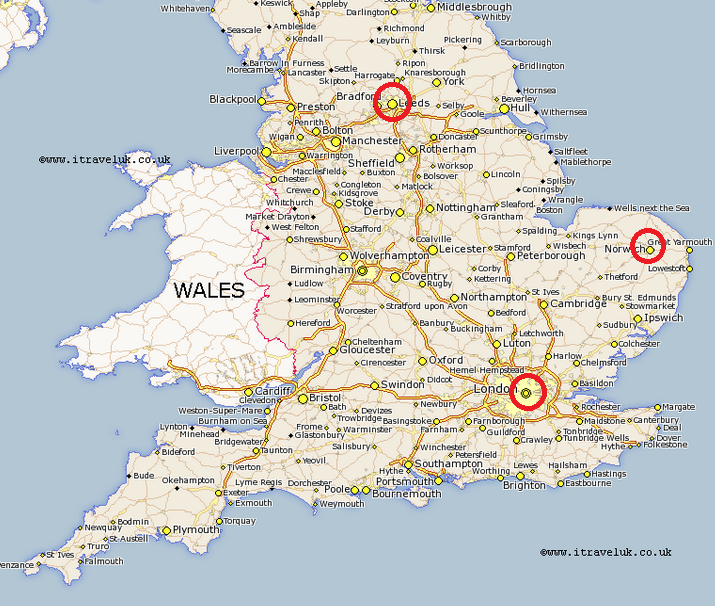
The weather influences many aspects of our lives inlcuding how we feel. Cloudy with a Chance of Pain is a study from the University of Manchester in conjunction with Arthritis UK, looking at how pain can vary with the weather
This week we’ve seen a September burst of heat accompanied by high humidity. This muggy, close feeling air has left many feeling uncomfortable, unable to sleep and for some, downright grumpy. Others have been enjoying the heat and coping with the humidity, embracing a bit of late summer warmth.
How does it feel?
This is one of the tricky bits about giving a weather forecast, how it feels. If you give a television broadcast and say “glorious summer sunshine”, there will be a flood of comments about how it is too hot and "this heat makes me feel ill". The excitement of snowfall is met by dread by some folk, especially the elderly, accompanied by worries about keeping warm in the winter. A whole day of rain would set teachers into decline at the thought of all those wet playtimes and cooped up children. Thunderstorms are another weather phenomenon which causes Storm Chasers to shout Yippee, whereas other people hide under the table. It is a minefield to actually comment on how the weather is going to feel, but without the reality of it all, a broadcast can be quite ‘dry’.
Our summer months are now beset with warnings about high UV values, air pollution levels and pollen forecasts. You may have thought that hayfever season was over and the grass pollen is now in decline, which it is. However, if you have a runny nose like me today, it could be an allergic reaction to the high levels of fungal spores, even weed pollen.
"Warm humid nights will allow a high risk from Didymella Tilletiopsis and Sporobolomyces. Good weather will allow Cladosporium and Alternaria to increase to high levels. Ganoderma (basidiospores) will be prevalent too, triggering a range of respiratory problems including asthma." National Pollen & Aerobiology Research Unit
Added to all these emotional reactions, there are physical reactions, chills, sweating, heat rash, tension headaches or general malaise. There are also less proven ailments which could be more acute in certain weathers. "Oh my aching bones" in winter, "I can feel it’s going to rain", migraines in thunderstorms, why some people can function in humidity and others can’t.
Cloudy
Researchers at the University of Manchester have just issued the early findings of a large-scale study called Cloudy with a Chance of Pain. It sets out to see if people with chronic conditions do suffer more in cold or wet weather. The information was sent in using an App, with 9,000 people involved in 3 cities Leeds, Norwich and London.

Not as damp as Manchester
Illnesses included back problems, migraines and arthritis. Arthritis Research UK is funding the research. The early findings of this large-scale study show that people reported less time in severe pain as the weather warmed from February to April. Pain seemed to get worse April to June, possibly as the weather got wetter, but this didn't tie in with the continued warmth heading into summer.
The project leader, Dr. Will Dixon, director of the Arthritis Research UK Centre for Epidemiology and a rheumatologist University of Manchester, said:
“We have long heard anecdotal evidence about how people with chronic conditions say they suffer more when the weather is bad – a lot of my patients tell me that they can predict the weather based on how they are feeling.”
This study uses daily weather data which is different to previous studies which have just taken average climate records. Also dew point temperatures are used for comfort values rather than relative humidity. They are looking to discover which particular weather parameter is most strongly correlated with pain (whether it be humidity or pressure changes or temperature changes)
Another area where research is needed is migraine pain. This week is Migraine awareness week, Sunday 4th September 2016 - Saturday 10th September 2016. #MAW16 is an annual campaign to draw attention to migraine, educate the public and reduce stigma.
Exactly what triggers a migraine is very individual to each person and can often be a combination of things. Identifying a trigger such as a particular food or lack of sleep can help with management of migraines but if weather is playing a part too, this trigger has been more difficult to spot
Migraines
Weather in all forms can be a problem for migraine sufferers; from an extremely hot day to a change in pressure or a thunderstorm. Many migraine sufferers have mentioned the impact that weather has on their lives
Dixon and his colleagues are still seeking more participants, and will be collecting data until April 2017. To take part you need to be over 17, have a chronic illness such as arthritis for over 3 months, live in the UK and have a smart phone (iOS or Android). You can keep an eye on your own data alongside the weather conditions. You are also invited to express you own thoughts about how the weather affects your pain levels, if you see patterns arising etc.

This project looks to be a practical way to record pain variations, give a mouth-piece to sufferers at the same time helping with the research, which may result in new treatments.
http://www.arthritisresearchuk.org/
Migraine http://www.migraine.org.uk/ https://www.migrainetrust.org